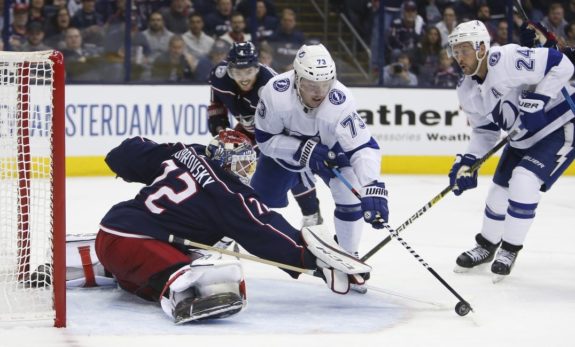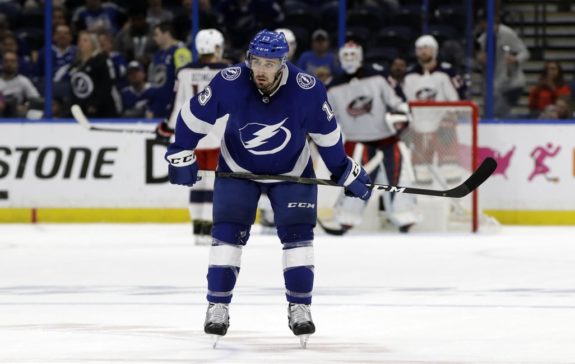After having one of the greatest regular seasons in NHL history, the Tampa Bay Lightning went from the top of the hockey world to the laughingstock of the league in less than one week. To put it bluntly, the Lightning were embarrassed by the Columbus Blue Jackets in Round 1, getting
Now, if you’re a fan of the Lightning, you have inevitably been asked one simple question throughout the last week – how did this happen? How did the team that dominated the regular season turn into a mess of bad play on all ends of the ice?

While there are dozens of reasons why this meltdown happened, here are three of the biggest issues that set it in motion.
Injuries Stunted Lightning’s Defense
Heading into the 2019 playoffs, the Lightning kept finding ways to win, which masked a serious issue for the team: injuries to key defensemen. By Game 1, Tampa Bay’s vaunted defensive core was just a shell of its’ former self, gutted by injuries to Victor Hedman and Anton Stralman.
These injuries essentially wiped out the Lightning’s top defensive pairing, causing the starting unit to become a mish-mash of out-of-place veterans and rookies alike. When Hedman was on the ice, you could tell that he was only playing at about 50 to 60 percent of his normal speed, an issue that was only exasperated by

With their defense in complete
These injuries also impacted Tampa Bay’s special team’s play as well. Without Hedman, both the power play and penalty kill lost one of its’ lynchpin players, which greatly contributed to the shockingly bad play after both units were the top in the league throughout the regular season.
Columbus Held Their Gameplan
After dominating the first period of Game 1, the Blue Jackets switched up their gameplan, playing a heavier trap game in their own zone, while activating their defensemen while on offense. This combination put the Lightning on their heels for the rest of the series, as they were unable to play the typical
In fact, the games started having an oddly familiar flow to them,

The only way to properly describe that game was boring. Nothing really happened, as the Lightning banged their head against Minnesota’s stout defense, generating few opportunities while giving up a number of their own.
As a
Penalties Broke the Lightning
Look, there’s no fan in the world that will say that the referee made the right call when they give your team a penalty. And I’m not trying to start a conspiracy theory that the refs were out to get the Lightning either.
That being said, this first-round series had remarkably few penalties called throughout. The Lightning only received six power plays in four games while Columbus only received 10. By contrast, the Vegas Golden Knights had nine opportunities in their Game 3 match-up against the San Jose Sharks alone.
It’s more than just a missed held stick here or a cross-check there. Throughout the regular season, the Lightning thrived on the power play, creating comeback opportunities after going down multiple goals. They also controlled the pace of games by drawing penalties, breaking up the opponent’s flow as they pressured with the man advantage.

The lack of consistent penalty calls also had the effect of slowing down Tampa Bay, as they couldn’t speed into the offensive zone with reckless abandon anymore. When they did this in the regular season, they would either score a goal or draw a penalty. As neither happened in the postseason, it often led to an odd-man rush against for Columbus and a scoring opportunity. This cost the Lightning a major part of their identity that had helped carry them to 62 wins this season.
Credit Due to Columbus
One thing that can’t be forgotten in this discussion is that the Lightning didn’t lose this series… Columbus won it. They outplayed Tampa Bay on all fronts, and earned their first playoff series victory in franchise history.
Related: Maple Leafs & Bruins Reflect on ‘Shocking’ Sweep of the Lightning
These three reasons why the Lightning lost aren’t excuses either. Even with these setbacks, they should have had the talent to surpass the Blue Jackets and threaten for the Stanley Cup. At the very least, they should have at least won a game in this series.